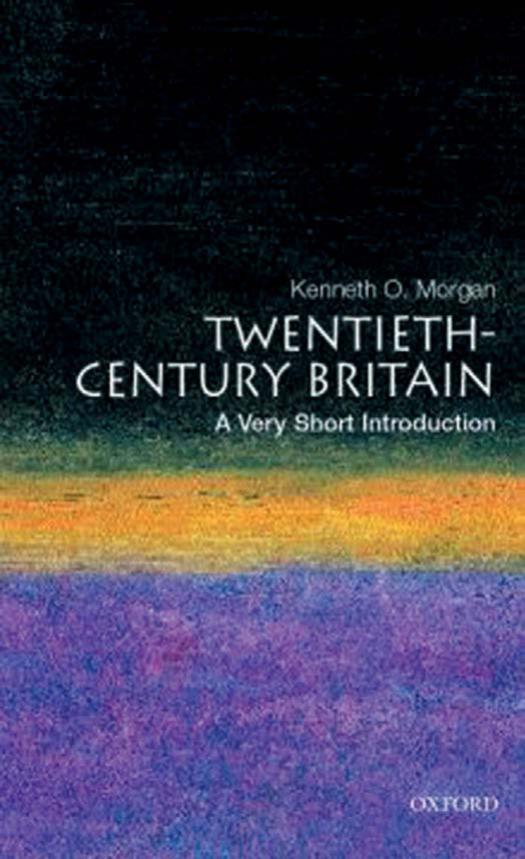Twentieth-Century Britain: A Very Short Introduction (Very Short Introductions) by Kenneth O. Morgan

Author:Kenneth O. Morgan [Morgan, Kenneth O.]
Language: eng
Format: epub, pdf, mobi
Publisher: Oxford University Press
Published: 2000-08-09T16:00:00+00:00
Political Radicalism and Reconstruction
At all levels this feeling chimed in with a noticeable mood of political radicalism. Indeed, in the years 1940–5, Britain may be said to have moved more rapidly to the left than at any other period of its history. In government, Labour ministers of the Churchill administration loomed large on the home front. Bevin; Clement Attlee, the deputy prime minister; Herbert Morrison, the home secretary; Greenwood, Hugh Dalton, and others became familiar and trusted figures. They were talismans of the faith that post-war reconstruction would indeed be carried into effect. So, too, were reformist Conservative ministers such as Butler, author of the Education Act. Their outlook harmonized with the new orthodoxies of the planners, many of them Liberal theoreticians such as Keynes or Beveridge, or simply apolitical technocrats.
Beyond the confines of Westminster and Whitehall, it was clear that the public was becoming more radical - at least, it should have been clear, since this was documented in Gallup polls in the newspapers, though little attention was paid by contemporaries to these unfamiliar forms of sociological evidence, of transatlantic origin. In by-elections, there were several successes for the vaguely Christian socialist Common Wealth Party. There was the widespread public enthusiasm for the Red Army, newly popular after Stalingrad and the advance towards Berlin. Even in the armed forces, so it was murmured, left-wing or novel ideas were being bandied about in current affairs groups and discussion circles. Letters home from servicemen in the western desert or the Far East voiced the angry determination for a better deal in the post-war world.
Reconstruction, then, was a far more coherent and deep-rooted concept as the war came to its close. In 1918, many of the blueprints had been poorly conceived and destined for rapid oblivion at the hands of the Treasury. This time it had been more plausibly a people’s war. The ideas were more precise and had both more democratic impetus and more intellectual ballast. The outcome was revealed with dramatic effect as soon as the war ended. The Churchill coalition broke up with unexpected suddenness in May 1945, a few days after the German surrender and with hostilities still continuing in the Far East against the Japanese. To Churchill’s dismay, the Labour Party’s national executive, voicing the wishes of the rank and file, insisted that Labour’s ministers leave the government. A general election was called for July.
The ‘coupon election’ of 1918 had been an unreal exercise throughout. Even if not polluted by the hysterical ‘hang-the-Kaiser’ jingoism to the extent that Keynes had suggested, that element was undoubtedly present. A general patriotic exaltation made the campaign of November-December 1918 a poor guide to the public mood. In June-July 1945, however, the spirit was more sober and focused more precisely on housing and health, full employment, and industrial regeneration, on post-war social imperatives rather than on external or imperial themes. In this sense, the power and prestige of Churchill, the revered war leader, were an irrelevance, even an embarrassment to the Conservative Party.
Download
Twentieth-Century Britain: A Very Short Introduction (Very Short Introductions) by Kenneth O. Morgan.pdf
Twentieth-Century Britain: A Very Short Introduction (Very Short Introductions) by Kenneth O. Morgan.mobi
This site does not store any files on its server. We only index and link to content provided by other sites. Please contact the content providers to delete copyright contents if any and email us, we'll remove relevant links or contents immediately.
| Africa | Americas |
| Arctic & Antarctica | Asia |
| Australia & Oceania | Europe |
| Middle East | Russia |
| United States | World |
| Ancient Civilizations | Military |
| Historical Study & Educational Resources |
Life of Elizabeth I by Alison Weir(2050)
The Invisible Wall by Harry Bernstein(1784)
Art of Betrayal by Gordon Corera(1413)
1916 in 1966 by Mary E. Daly(1256)
Thunderstruck by Erik Larson(1232)
The Decline and Fall of the British Empire, 1781-1997 by Piers Brendon(1108)
A Brief History of Britain, 1066-1485 by Nicholas Vincent(1022)
A Brief History of Britain, 1485-1660 by Ronald Hutton(994)
Guy Burgess by Stewart Purvis(988)
Mary, Queen of Scots by Weir Alison(978)
Henry VIII by Alison Weir(925)
The Last Lion 02 - Winston Churchill - Alone, 1932-1940 by William Manchester(919)
Fifty Years On by Malachi O'Doherty(882)
Lang Lang by Lang Lang(858)
1066 by Andrew Bridgeford(842)
Gimson's Kings and Queens by Andrew Gimson(838)
Coalition by David Laws(822)
The Last Plantagenet by Thomas B Costain(821)
London: A Biography by Peter Ackroyd(816)
